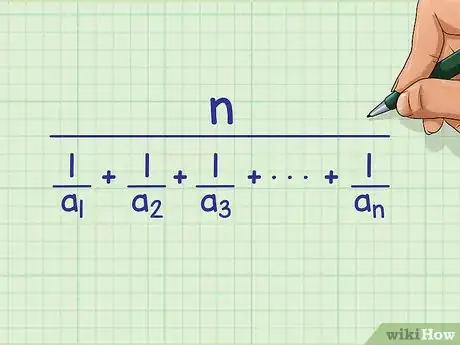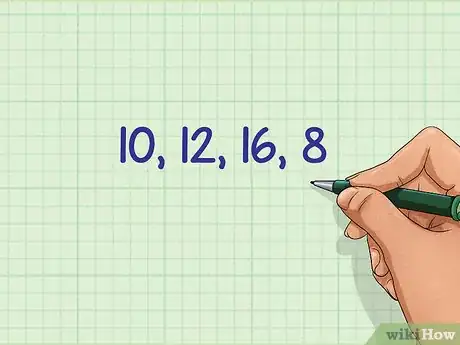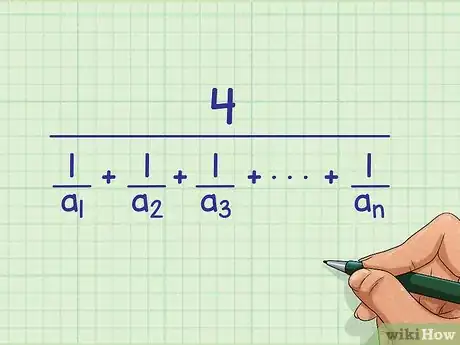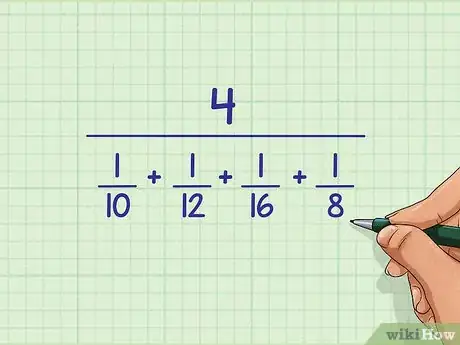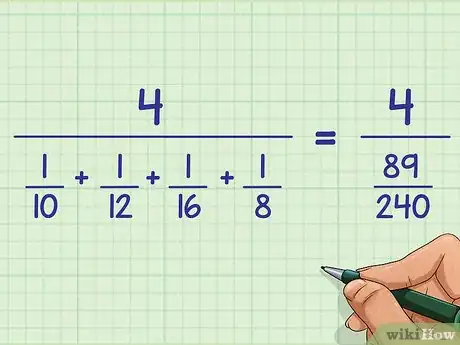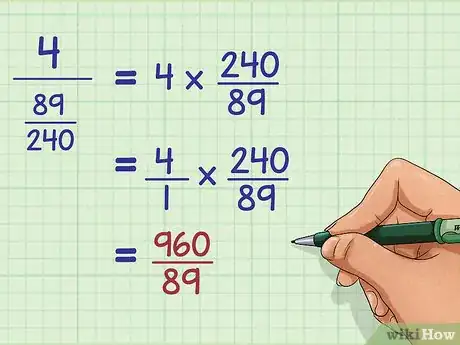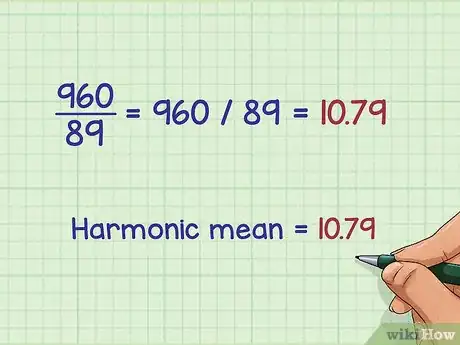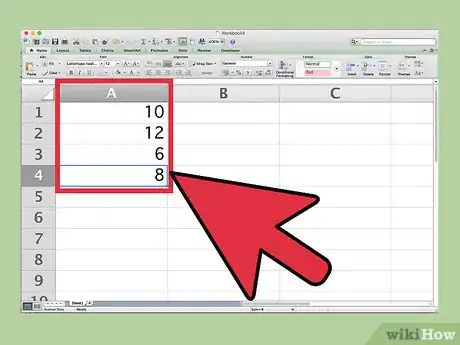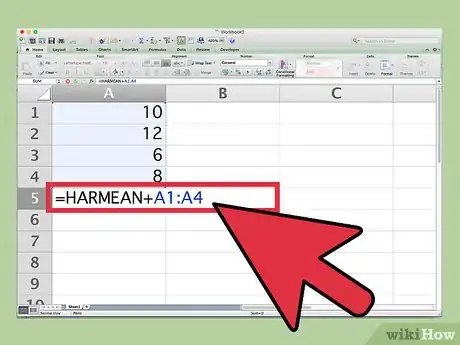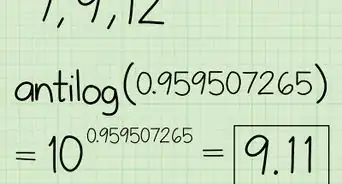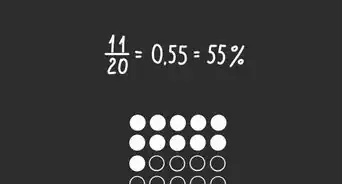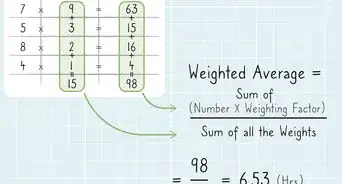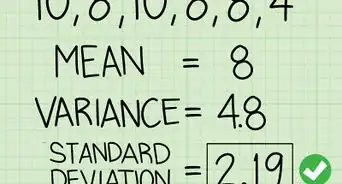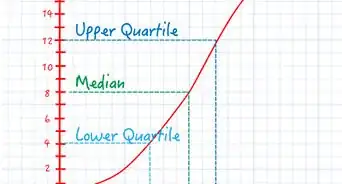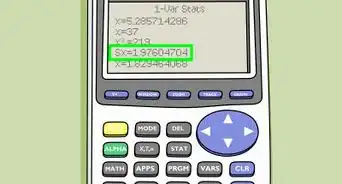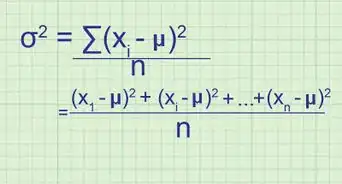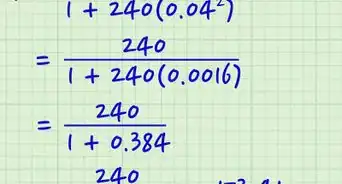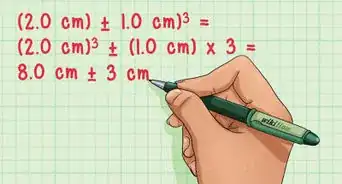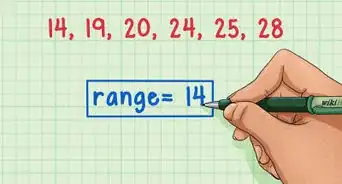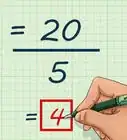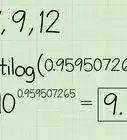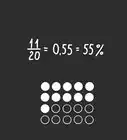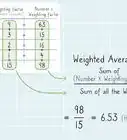This article was co-authored by wikiHow Staff. Our trained team of editors and researchers validate articles for accuracy and comprehensiveness. wikiHow's Content Management Team carefully monitors the work from our editorial staff to ensure that each article is backed by trusted research and meets our high quality standards.
This article has been viewed 145,680 times.
Learn more...
The harmonic mean is a way to calculate the mean, or average, of a set of numbers. Using the harmonic mean is most appropriate when the set of numbers contains outliers that might skew the result. Most people are familiar with calculating the arithmetic mean, in which the sum of values is divided by the number of values. Calculating the harmonic mean is a little more complicated. If working with a small set of numbers you may be able to solve by hand using the formula. Otherwise, you can easily use Microsoft Excel to find the harmonic mean.
Steps
Setting Up the Formula
-
1Set up the formula for the harmonic mean. The formula is , where is the number of values in the set of numbers, and , , are the values in the set.[1]
-
2Determine the values you need to find the harmonic mean for. This can be any set of numbers.[2]
- For example, you may need to find the harmonic mean for the numbers 10, 12, 16, and 8.
Advertisement -
3Plug the value of into the formula. This will equal the number of values in your set.
- For example, if you are finding the harmonic mean of the numbers 10, 12, 16, and 8, you are working with 4 values, the numerator of your formula will be 4:
- For example, if you are finding the harmonic mean of the numbers 10, 12, 16, and 8, you are working with 4 values, the numerator of your formula will be 4:
-
4Plug the values your are averaging into your formula. You will take the reciprocal of each number and add them in the denominator of the formula. Remember, when you take the reciprocal of a whole number, you turn the number into a fraction by placing a 1 in the numerator and the whole number in the denominator.[3]
- For example, if the values in your set are 10, 12, 16, and 8, you would place the fractions , , , in your denominator:
- For example, if the values in your set are 10, 12, 16, and 8, you would place the fractions , , , in your denominator:
Calculating the Harmonic Mean by Hand or Calculator
-
1Add the fractions in the denominator. You can use a calculator, or add them up by hand. If you are not using a calculator, remember to find a common denominator first. To learn more about adding fractions, read Add Fractions.
- For example:
- For example:
-
2Divide the numerator by the denominator. Remember that dividing by a fraction is the same as multiplying by its reciprocal.[4]
- For example:
- For example:
-
3Convert to a decimal to find the harmonic mean of your set of numbers. To convert a fraction to a decimal, divide the numerator by the denominator.[5]
- For example:
So, the harmonic mean of the numbers 10, 12, 16, and 8 is 10.79.
- For example:
Calculating the Harmonic Mean using Excel
-
1Enter the values into your spreadsheet. Make sure to only place one value in each cell.
- For example, if you need to find the harmonic mean of 10, 12, 16, and 8, you might type each of these values into a separate cell in the spreadsheet, cells A1-A4.
-
2Enter the function for the harmonic mean. The function is HARMEAN(number 1, [number 2]...).[6] To select the function, begin typing “=HARMEAN” into a blank cell of the spreadsheet, then double-click on the function when it pops up.
- For example, type “=HARMEAN” into cell A5 of your spreadsheet and double-click on the function.
-
3Highlight the cells containing the values you are averaging. Hit the enter key. Excel will calculate the harmonic mean for you and display it in the spreadsheet.
- For example, highlight cells A1-A4 of your spreadsheet and hit enter. Excel will calculate 10.78652 as the harmonic mean.
Community Q&A
-
QuestionWhat are the harmonic means of 5, 6 and 7?
 Community Answer3/(1/5+1/6+1/7) = 3/(42/210 + 35/210 + 30/210 ) = 3/( 107/210) = 3 x 210/107= 630/107 = 5.89
Community Answer3/(1/5+1/6+1/7) = 3/(42/210 + 35/210 + 30/210 ) = 3/( 107/210) = 3 x 210/107= 630/107 = 5.89 -
QuestionWhat is the harmonic mean of x1,x2,x3.xn?
 Community AnswerThis is just asking for the formula: n/(1/x1 + 1/x2 + 1/x3 +...+1/xn)
Community AnswerThis is just asking for the formula: n/(1/x1 + 1/x2 + 1/x3 +...+1/xn) -
QuestionCan you tell me the harmonic mean of 0 2 4 6?
 DonaganTop AnswererThere's no harmonic mean when zero is one of the values in the set. That's because the formula would have 1/0 as one of the terms in the denominator, and 1/0 is infinity and not usable.
DonaganTop AnswererThere's no harmonic mean when zero is one of the values in the set. That's because the formula would have 1/0 as one of the terms in the denominator, and 1/0 is infinity and not usable.
References
- ↑ http://www.ck12.org/book/CK-12-Probability-and-Statistics-Concepts/section/5.3/
- ↑ https://www.omnicalculator.com/math/harmonic-mean
- ↑ https://flexbooks.ck12.org/cbook/ck-12-probability-and-statistics-concepts/section/5.3/primary/lesson/harmonic-mean-pst/
- ↑ https://www.mathsisfun.com/fractions_division.html
- ↑ http://www.purplemath.com/modules/percents2.htm
- ↑ https://support.office.com/en-us/article/HARMEAN-function-5efd9184-fab5-42f9-b1d3-57883a1d3bc6
About This Article
To calculate the harmonic meaning, start by determining the number of values in your set of numbers. For example, if you're working with 10, 12, 16, and 8, you have 4 numbers, so the value is 4. Then, rewrite the numbers you're working with as denominators over the number 1. For example, if you're working with 10, 12, 16, and 8, write them as 1/10, 1/12, 1/16, and 1/8. Then, divide 4 by the sum of the fractions to find the harmonic mean. To calculate the harmonic meaning using a calculator, keep reading!
